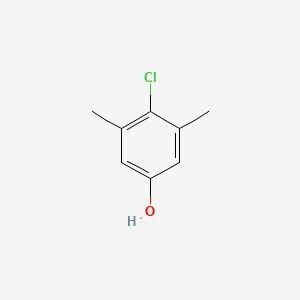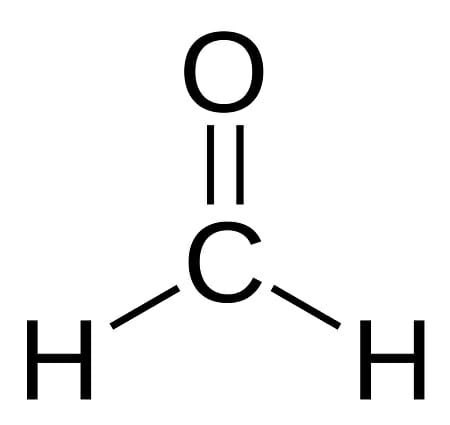Proflavine: Physicochemical Properties
| Name | Proflavine: Antiseptics and Disinfectant |
| Nomenclature | 3-6-ACRIDINEDIAMINE 3,6-Diaminoacridine |
| IUPAC Name | Acridine-3,6-Diamine |
| Chemical Structure |  |
| Uses | Anti-infective Topical antiseptic Disinfect Bacterio-static (stops the further growth of reproducing bacteria) Proflavine inhibits vaccine viral synthesis |
| Physical properties | Physical state and appearance – Solid orange to red powder Melting point- 285 °C Boiling point- 507 °C at 760mmHg Solubility- mostly Soluble in polar solvent such as ethanol, water. Insoluble in non-polar solvent (Benzene ether) |
| Chemical properties | Molecular weight – 209.25 g/mol Molecular formula – C13 H11N3 |
| Stability and storage condition | Store at cold condition i.e. 4 to 8 °C Light sensitive and hydroscopic Proflavine is stable for 1 year under cold conditions |
| Brand name | Bayer Pessaries MolcaSepticide |
Benzalkonium chloride: Physicochemical Properties
| Name | Benzalkonium chloride : Antiseptics and Disinfectant |
| Nomenclature | ADBAC Alkyl dimethylbenzyl ammonium chloride N-Alkylbenzyldimethylammonium chloride Alkyldimethyl(phenylmethyl)quaternary ammonium chlorides Alkyldimethylbenzylammonium chloride |
| Chemical Structure |  |
| Uses | Surfactant Antibacterial agents (bactericide- kill the microorganism) Preservatives Antiseptic Detergent |
| Physical properties | Colourless or yellowish powder Melting point- 29-34 °C Solubility- freely soluble in water at 20°C |
| Chemical properties | Molecular formula – C9 H13ClNR (R= C8H17 to C18H37) Molecular weight – 372.028g/mol (C22 H42ClNO) Class of quaternary ammonium compounds It having different lengths of alkyl group vary C8 to C18. For the maximum bactericidal activity found in C12 – C14 alkyl group |
| Stability and storage condition | Store at room temperatureKept in tightly closed container |
| Brand name | Alfa Drops CFC(ointment) Ciplox D Hyamine 3500 Antibacterial soap |
Phenol: Physicochemical Properties
| Name | Phenol : Antiseptics and Disinfectant |
| Nomenclature | Benzenol Carbolic acid Hydroxybenzene Phenic acid Phenyl hydroxide Oxybenzene |
| Chemical Structure |  |
| Uses | Antiseptic Detergent Oral analgesic |
| Physical properties | White crystalline powder or solution. Solution can be white to slight pink color It has a distinct aromatic phenolic odor Melting point- 40 – 42 °C Boiling point- 182 °C Solubility- slightly soluble in water; freely soluble in chloroform, ether, glycerol, and fixed oil |
| Chemical properties | Molecular formula – C6 H6O or C6 H5OH Molecular weight – 94.11 g/mol |
| Stability and storage condition | Store at dry, cool place |
| Brand name | Blistex Chloraseptic Phenyle |
Cetrimide: Physicochemical Properties
| Name | Cetrimide: Antiseptics and Disinfectant |
| Nomenclature | Myristyltrimethylammonium bromide Tetraadonium bromide TTAB MITMAB Tetradecyltrimethylammonium bromide |
| Chemical Structure |  |
| Uses | Antiseptic Disinfectant |
| Physical properties | Colourless crystalline powder Melting point- 245-250 °C Solubility- slightly soluble in water |
| Chemical properties | Molecular formula – C17 H38BrN Molecular weight – 336.4 g/mol |
| Stability and storage condition | Hygroscopic Incompatible with oxidizing agents Store at cool temperature Stable under normal condition |
| Brand name | Cetavlon Sacbrace Scabus Hexiwil-C Ketona |
Chloroxylenol: Physicochemical Properties
| Name | Chloroxylenol: Antiseptics and Disinfectant |
| Nomenclature | p-chloro-3,5-xylenol2-chloro-m-xylenol2-chloro-5-hydroxy-m-xylene |
| Chemical Structure |  |
| Uses | Antiseptic Disinfectant Antimicrobial |
| Physical properties | Phenolic odor Boiling point- 246 °C Melting point- 112-116 °C Solubility- soluble in ethanol; slightly soluble in pet ether and benzene |
| Chemical properties | Molecular formula – C8 H9ClO Molecular weight – 156.61 g/mol |
| Stability and storage condition | Store at room temperature It stable when exposed to sunlight and humidity It also stable at higher temperature (54°C) |
| Brand name | Dettol Hand wash & soap |
Formaldehyde solution: Physicochemical Properties
| Name | Formaldehyde solution: Antiseptics and Disinfectant |
| Nomenclature | Formalin Methanal Formol Methylene oxide |
| Chemical Structure |  |
| Uses | Preservative Antimicrobial |
| Physical properties | Colorless aqueous solutionPungent smell Boiling point- (-19) °C Melting point- (-92) °C Solubility- soluble in water, ethanol and chloroform |
| Chemical properties | Molecular formula – CH2O Molecular weight – 30.026 g/mol |
| Stability and storage condition | Store at room temperature or cool temperature Flammable should be kept in air tightly sealed container and away from flame prone area Dilute solution of formaldehyde can be stabled at 2 °C for one week |
| Brand name | Dettol Hand wash & soap |
Hexachlorophene: Physicochemical Properties
| Name | Hexachlorophene: Antiseptics and Disinfectant |
| Nomenclature | 2,2’-methylenebis(3,4,6-trichlorophenol) |
| Chemical Structure |  |
| Uses | DisinfectantAntiseptic |
| Physical properties | Colorless free flowing powder Slight characteristic phenolic odor Boiling point- 479 °C Melting point- 166.5 °C Solubility- Insoluble in water; soluble in chloroform, PEG |
| Chemical properties | Molecular formula – C13H6Cl6O2 Molecular weight – 406.90 g/mol |
| Stability and storage condition | Store at room temperature up to 25 °C Stored in air tightly sealed container and away |
| Brand name | pHisoHex |
Nitrofurantoin: Physicochemical Properties
| Name | Nitrofurantoin: Antiseptics and Disinfectant |
| Nomenclature | 1-[(E)-(5-nitrofuran-2-yl)methylideneamino]imidazolidine-2,4-dione |
| Chemical Structure |  |
| Uses | Disinfectant Antiseptic |
| Physical properties | Lemon yellow crystals Bitter taste Melting point- 263-272 °C Solubility- Insoluble in water and ether; slightly soluble in alcohol |
| Chemical properties | Molecular formula – C8H6N4O5 Molecular weight –238.16 g/mol |
| Stability and storage condition | Store at room temperature up to 30 °C Stored in air tightly sealed container and away |
| Brand name | Trifuran tabFuradantin tab |
References:

